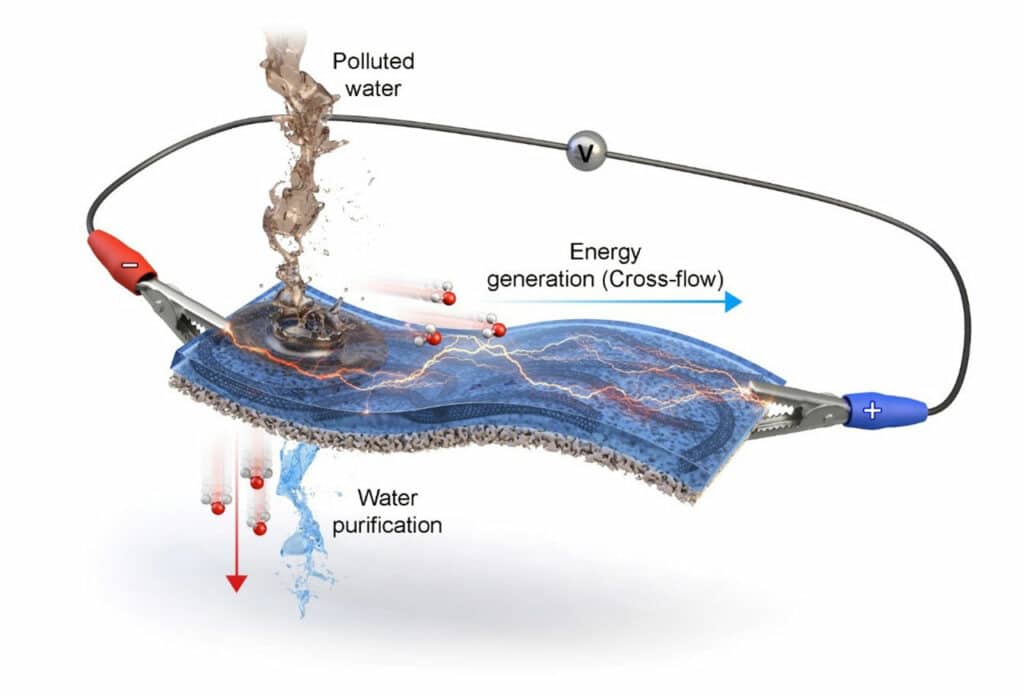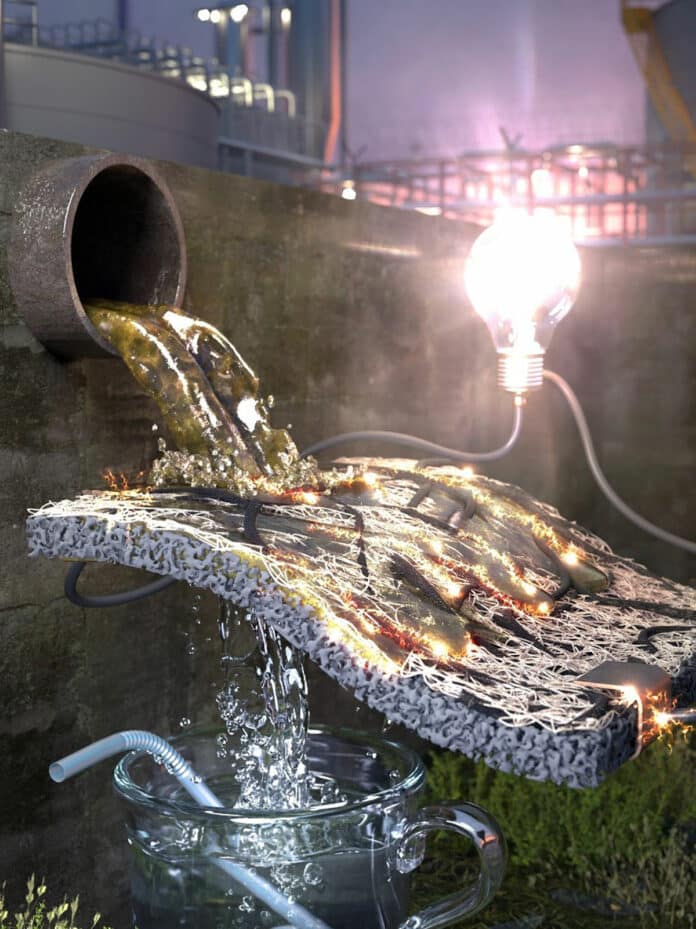The purification of various water resources, such as rain, seawater, groundwater, river water, sewage, and wastewater, into potable or usable water is a high-energy process. Hydroelectric nanogenerators have been previously proposed to recycle various water resources and polluted water. However, as conventional hydroelectric nanogenerators only utilize water resources, they cannot provide a fundamental solution for water recycling.
Now, the Korea Institute of Science and Technology (KIST) has announced that a research team has developed a multifunctional membrane that can simultaneously provide drinking water and generate continuous electricity from various water resources, such as sewage/wastewater, seawater, and groundwater.
The research team includes Dr. Ji-Soo Jang’s team from the Electronic Materials Research Center and Prof. Tae-Gwang Yoon’s team from the Department of Materials Science and Engineering, Myongji University (President Byeong-Jin Yoo).

The sandwich-like membrane is composed of a porous membrane that filters water at the bottom and a conductive polymer that generates electricity at the top. It is designed to purify wastewater by controlling the direction of the water flow. Water flows perpendicularly to the membrane and generates direct current by the movement of ions along the horizontal direction.
The membrane can reject more than 95% of the contaminants of sizes less than 10 nm (one hundred-millionth of a meter). Hence, microplastics and heavy metal particles in wastewater can be removed, and continuous electricity can be generated for more than 3 hours with only 10 µl (microliter) of water.
The membrane can be manufactured using a simple printing process without size restrictions. Due to this, it has a high potential to be commercialized due to low manufacturing costs and processing time.
Researchers are currently conducting follow-up research to generate electricity while improving the water quality of wastewater to the level of drinking water by developing the membrane for an actual factory.
“As a novel technology that can solve the water shortage problem and produce eco-friendly energy simultaneously, it also has great potential applications in the water quality management system and emergency power system,” expressed Dr. Ji-Soo Jang from KIST.
Journal reference:
- Ji-Soo Jang, Yunsung Lim, Hamin Shin, Jihan Kim, Tae Gwang Yun. Bidirectional Water-Stream Behavior on a Multifunctional Membrane for Simultaneous Energy Generation and Water Purification. Advanced Materials, 2022; DOI: 10.1002/adma.202209076
